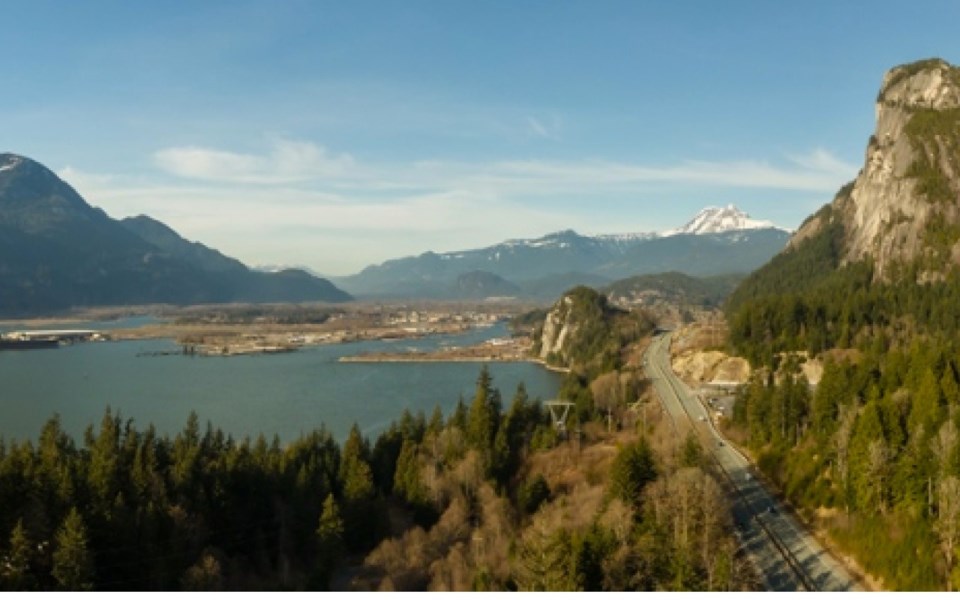Should a disaster hit Squamish on a peak summer weekend day, about 27,600 people will be forced to flee town. Roughly 350 won't have a car to get them out.
This is one of several projections that were detailed in the District of Squamish's new evacuation plan, which was co-developed with the Resort Municipality of Whistler.
For Squamish, we really focused quite heavily on flood-related hazards," said Megan Latimer, the District's emergency program co-ordinator. "So flooding, debris flow, failure of the dam, barrier collapse. We also considered wildfire, volcanic eruptions, earthquakes, loss of essential services."
This plan was presented to Squamish council during their committee of the whole meeting on May 21.
There was also consideration with respect to human-caused disasters, such as hazardous materials released and terrorism.
The study took considerable time looking at a number of travel options in the event of a disaster, such as rail, the airport, boats and forest service roads.
Ultimately, it was found the Sea to Sky Highway would likely play the key role in the event of a disaster, Latimer said.
"Through our analysis, we understood that Highway 99... still has the most significant capacity for evacuation," she said. "This is going to be the main means of travel for people to evacuate."
Roy Simons of ISL Engineering, the firm that made the report for the District, said that if possible, phasing the highway evacuation would be a good way to make sure traffic doesn't get backed up for too long.
"Ideally, you want to phase it for as long as possible so there's less congestion on the highway," Simons said.
There were several problem areas identified in the report.
Probably the biggest is the Mamquam Road area, westbound. The report estimated it would take about nine hours to clear that neighbourhood due to a left turn onto the highway. That's assuming all neighbourhoods are evacuating, as well, Simons said.
It may take six hours for the Garibaldi Way area to empty out. The Depot Road and Industrial Way areas would both take five.
Overall, the report says a phased mass evacuation to the south of Squamish would take approximately 13 hours on a peak day, with some minor spikes in travel time suggesting temporary congestion at certain intersections with Highway 99.
If the phased evacuation goes north, that would take 15 hours.
Splitting the phased evacuation between north and south could take six to seven hours, the report says.
The times are measured from when the first vehicle enters the road to when the last vehicle reaches a point of safety.
If no phasing is used, for example in a situation where no advance notice of a disaster is possible, the overall evacuation time may be slightly shorter, the report says. However, individual wait times would be much longer.
It could "potentially put people living closest to the hazard impact at risk by blocking their neighborhoods from being able to evacuate first," the report reads.
During the presentation to council, one topic of discussion was the use of railway lines to get people out of town.
CN Rail owns the tracks around town but doesn't have any passenger trains, Latimer said. The company told the District to call other corporations to see if passenger transit could be a possibility, she said.
Latimer said that TransLink could bring its West Coast Express trains in case of an emergency. Locally, the West Coast Railway Heritage Park has five passenger rail cars that could be used if needed, she added. They're normally used for Thomas the Tank Engine or the Polar Express, but they can be converted into evacuation trains.
Mayor Karen Elliott noted that the language in the plan appeared to suggest that CN was non-committal in allowing for the use of its rails.
She wondered if staff could make a deal with the company in advance, as rails would be a great way to move lots of people out, as well move heritage trains.
"'We'll see what we can do' — that's basically the tone of this report," said Elliott, with respect to CN.
Latimer said CN is reluctant to have agreements with individual municipalities to move people out, and the company asked the District to refer the idea to the province, which could then figure out a deal on behalf of all municipalities. The District has asked the province to take up the issue with CN, and the province has had initial meetings with the company.
The airport, Latimer said, would probably be used for transporting those with complex medical needs, but wouldn't be the best option for evacuating large numbers of people from the community.
With respect to the marine front, BC Ferries could bring in a boat the size of the Queen of Coquitlam, which has three car decks, a passenger and a sun deck.
Normally it fits about 1,500 passengers, but this number would be higher if they used the vehicle spaces for more people.
Buses could pick up people and transport them to the vessels, Latimer said.
It's also possible to bring in a cruise ship to Squamish Terminals, she said.
This article originally appeared here.




